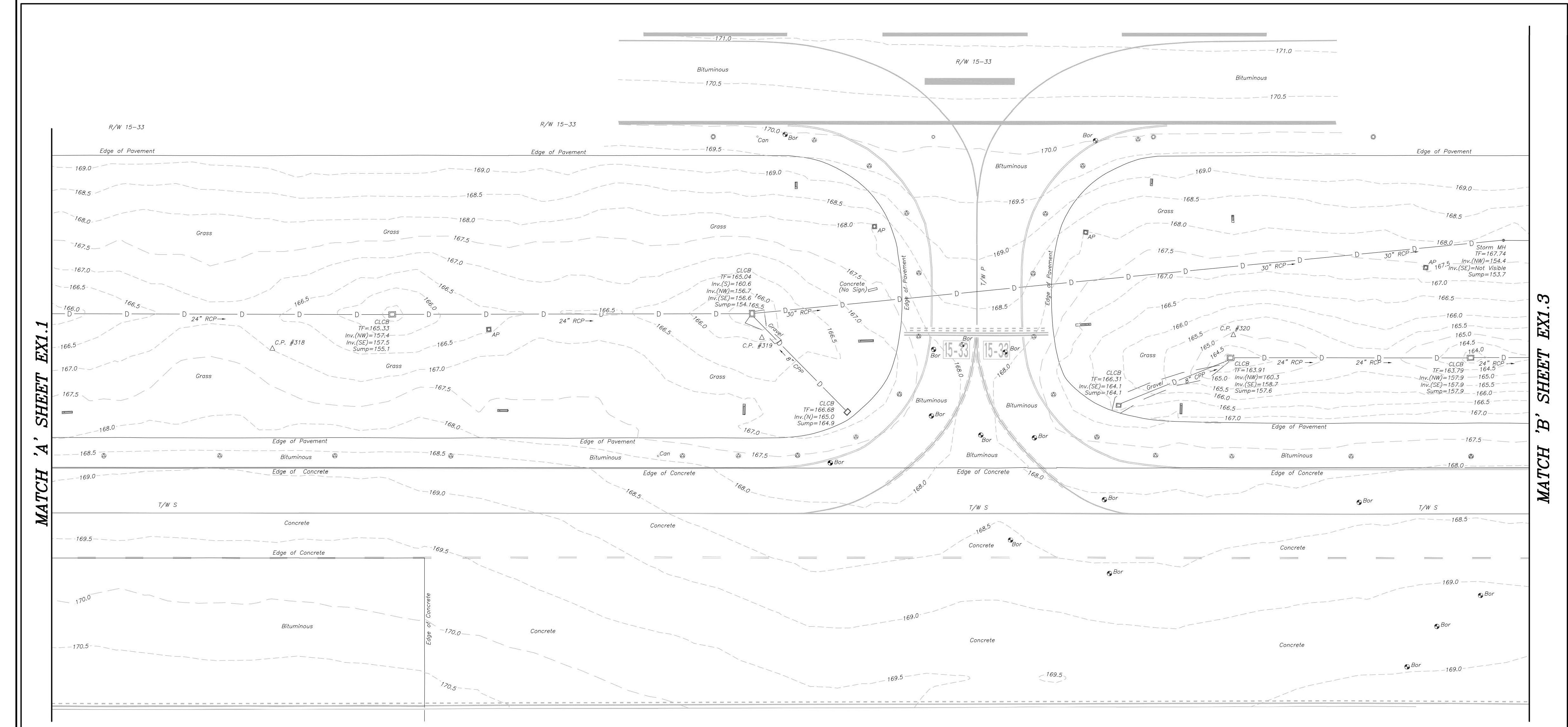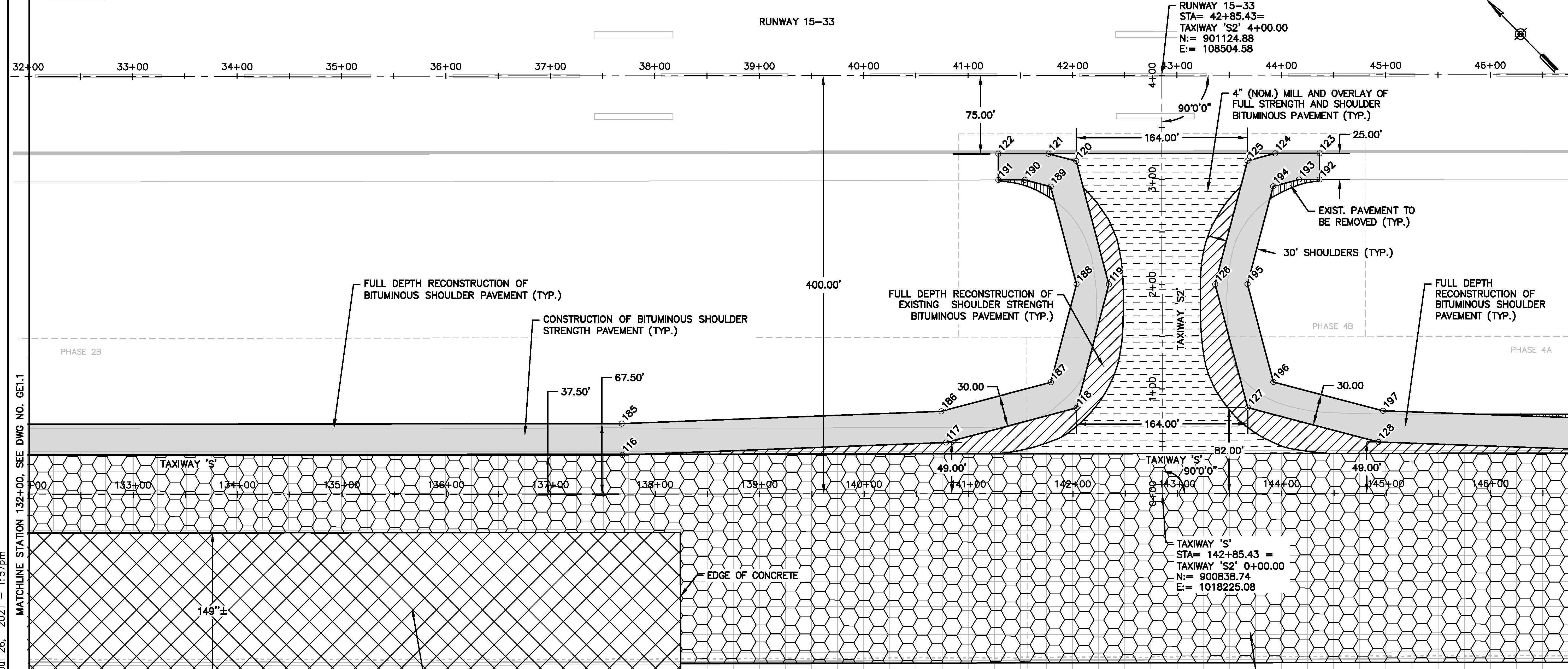Ensuring the seamless operation of an airport requires a proactive approach to infrastructure maintenance and enhancement. The recent rehabilitation of Taxiway S at Bradley International Airport in Windsor Locks, Connecticut, serves as a testament to our engineering team‘s dedication in overcoming challenges and implementing innovative solutions.
The Challenges
The existing parallel Taxiway S presented a series of challenges, marked by deterioration and cracking that demanded immediate attention. Beyond surface concerns, the connector taxiways between Taxiway S and Runway 15-33 required a reconfiguration (before and after shown below), and the removal of a holding bay was imperative to align with the strict criteria outlined by Federal Aviation Administration (FAA).


Recognizing the critical nature of these issues, our engineering team initiated a comprehensive plan to address them. Before rehabilitating the taxiway, our team evaluated the geotechnical data and created a plan. This evaluation laid the groundwork for a multifaceted approach, encompassing partial full-depth asphalt reconstruction, asphalt pavement mill and overlay, and the removal of existing pavement. Another challenge was phasing and coordinating this project along with two other projects simultaneously occurring.
Rehabilitation Strategies
The rehabilitation process focused on comprehensive restoration. Surface imperfections were addressed through crack sealing, joint resealing, spall repairs, and the replacement of concrete slabs. In areas requiring more intensive intervention, full-depth reconstruction involved the removal and replacement of approximately 2.5 feet of material, spanning both asphalt and base materials. This approach ensured that both surface and structural issues were effectively resolved, extending the longevity of Taxiway S.
Cost-Saving Solutions
Beyond physical reconstruction, our team integrated new LED taxiway light installation into our design. Recognizing the importance of sustainable and efficient lighting led to the specification and design of new LED lighting equipment. The inclusion of LED technology not only enhances visibility and safety but also contributes to energy efficiency and long-term cost savings.
Elevating Aviation Infrastructure
The successful rehabilitation of Taxiway S underscores the collaborative expertise of our engineering team. By addressing surface and structural concerns, ensuring FAA compliance, and embracing energy-saving lighting solutions, we have revitalized a critical airport component. This project not only signifies our commitment to excellence but also propels us toward a future where airport infrastructure continually evolves to meet the demands of the aviation landscape. To find out more about the rehabilitation projects we do, or how we can help your project, reach out to me or see our projects!









